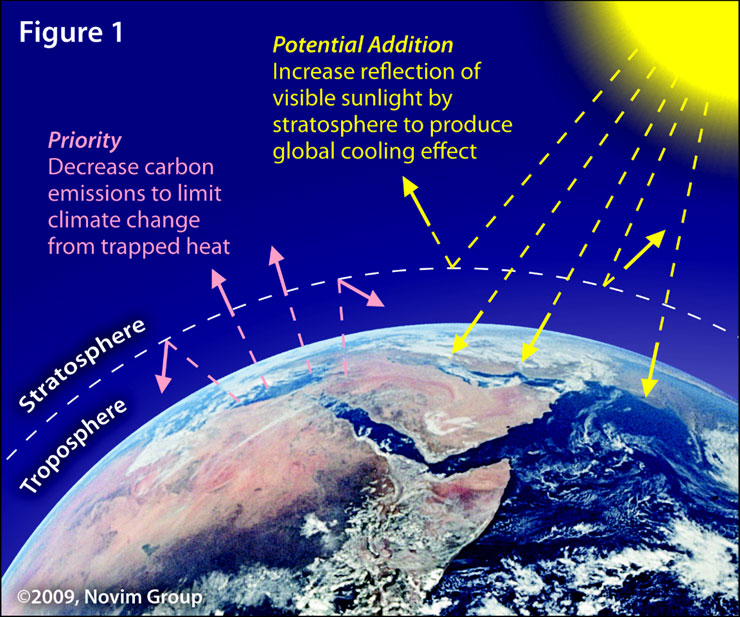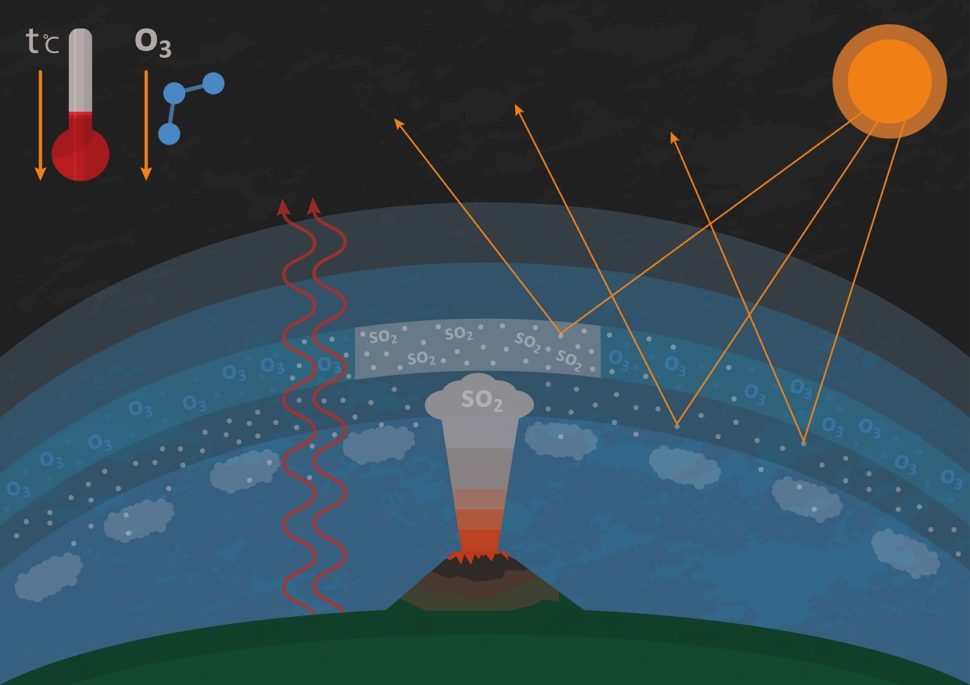The general consensus is that cutting greenhouse gasses is crucial to limiting climate change, but reducing emissions alone won’t solve the problem. In order help limit and even reverse the effects of climate change, scientists are turning to supplemental measures like solar geoengineering.
What is Solar Geoengineering?
Solar geoengineering offers a way to reflect sunlight back into space before it has a chance to enter our atmosphere and warm it. The technology relies on deploying sulfate aerosols directly into the stratosphere, which, in turn, function like tiny mirrors and reflect sunlight back into space.
And, the technique is more than just theoretical: scientists have already observed the proven cooling effect produced by naturally-occurring sulfate aerosols released into the stratosphere by large volcanic eruptions.

However, there is a trade-off. While sulfate aerosols help deflect sunlight back into space, they do so at the cost of producing ozone-damaging sulfuric acid. Without as much ozone to filter UV radiation, both the risks and occurrences of conditions like skin cancer and eye damage are likely to increase.
Luckily, new research out of the John A. Paulson School of Engineering and Applied Sciences (SEAS) at Harvard has discovered a way to reap all of climate change-limiting benefits of sulfate aerosols without any of the ozone-damaging consequences.
Atmospheric Antacid
The answer? One found fairly easily on the Periodic Table of Elements. If neutralizing an acid is the task (a mix of sulfuric, nitric, and hydrochloric acids, to be exact), then a non-toxic, alkaline should do the trick.
'Essentially, we ended up with an antacid for the stratosphere,' explains Frank Keutsch,Click To Tweet“Essentially, we ended up with an antacid for the stratosphere,” explains Frank Keutsch, the research team leader and SEAS Professor of Engineer and Atmospheric Sciences.
Always Treating the Symptoms, but Never the Cause
While Keutsch and his team have definitely made significant progress in refining solar geoengineering technology for application in the short-term, the long-term effects of releasing such particles and their neutralizers into the environment are unclear.
The SEAS team recognizes that there is still much to be done, and that solar geoengineering only addresses the symptoms of climate change and not the root problem. However, Keutsch and his team of researchers explain that this is exactly why they are conducting this research and accompanying experiments.
Solar geoengineering’s potential for climate change damage control is clearly enormous.
But, to truly limit how quickly our planet is heating up and even reverse the effects of climate change, the answer lies beyond putting more substances into the atmosphere in the first place. Prevention is always the best medicine, but an antacid will do for now.



















Investment is one of the best ways to achieve financial freedom. For a beginner there are so many challenges you face. It’s hard to know how to get started. Trading on the Cryptocurrency market has really been a life changer for me. I almost gave up on crypto at some point not until saw a recommendation on Elon musk successfully success story and I got a proficient trader/broker Mr Bernie Doran , he gave me all the information required to succeed in trading. I made more profit than I could ever imagine. I’m not here to converse much but to share my testimony; I have made total returns of $10,500.00 from an investment of just $1000.00 within 1 week. Thanks to Mr Bernie I’m really grateful,I have been able to make a great returns trading with his signals and strategies .I urge anyone interested in INVESTMENT to take bold step in investing in the Cryptocurrency Market, he can also help you RECOVER your lost/stolen Cryptocurrencies. you can reach him on WhatsApp : + 1 (424) 285 – 0682 or his Gmail : BERNIEDORANSIGNALS @ GMAIL . COM bitcoin is taking over the world, tell him I referred you